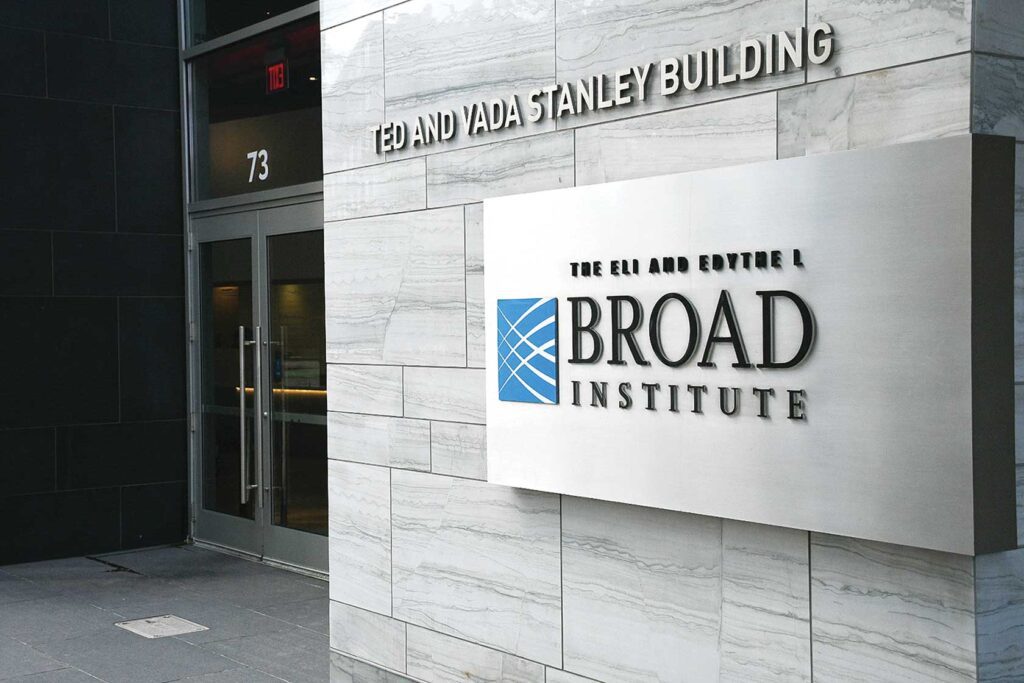
A new research partnership between the Broad Institute and pharmaceutical company Novo Nordisk aims to help develop new treatments for diabetes.
The research will focus on Type 2 diabetes and cardiac fibrosis. In their diabetes research, the team will aim to address the cause of the disease rather than the symptoms.
Across the country, diabetes disproportionately impacts Americans of color. According to the 2023 Health of Boston report, released by the Boston Public Health Commission, 14.6% of Black residents and 13.1% of Latino residents reported having diabetes, while 4.7% of white residents did.
By neighborhood, the report found the disease was more prevalent in Roxbury, Dorchester and Mattapan than in the city overall.
Statewide, diabetes numbers have been rising over the past few decades. In 1993, an estimated 3.9% of residents in the state had the disease, a figure that had risen to 8.9% by 2015, according to data from the Massachusetts Department of Public Health.
Uli Stilz, vice president of the Novo Nordisk Bio Innovation Hub, said that there have been past successes in treating diabetes, but none has managed to address the root cause.
“Over now many years, of course, we have looked into finding new treatments — and yes, we have been successful, but what we have so far as treatment is all symptomatic,” Stilz said.
Dr. Jose Florez of the Broad Institute, one of the initiative’s co-directors, said current diabetes treatments tend to address symptoms caused by the disease, rather than the root of the disease itself — akin to treating the tissue growth caused by cancer if you don’t know what caused the growth in the first place.
Instead, the research generated by this partnership aims to address what’s causing the disease in the first place.
Diabetes is an umbrella category, covering a cluster of diseases that have different root causes but all result in the same effect.
“What we think is that diabetes, because has been defined by this end result, is a very heterogeneous condition,” Florez said. “It’s actually a multitude of different diseases that all give you high glucose in the end.”
The partnership will narrow its focus to forms of diabetes where the body fails to produce enough insulin — problems with the pancreas’s beta cells, which generate the hormone — and other forms where enough insulin may be produced, but the body can’t properly absorb it, called insulin resistance.
By the end of its initial three-year run, the team hopes to have identified concrete gene targets to know what causes a particular form of diabetes, so future work might be able to generate drugs to treat the root causes.
The goal is that the work might eventually lead to what Stilz called a “disease modifier,” a treatment that would change the course of diabetes by slowing, preventing or even reversing the disease.
“That, of course, would be a dramatically different outlook for people living in those conditions,” Stilz said. “If we could slow onset or disease progression or even stop it. That’s something we cannot do today.”
Even with the narrowed focus on insulin resistance and beta cell function, Dr. George King, the director of research at the Joslin Diabetes Center, said the goal of addressing the root causes of diabetes seems “nebulous” to him.
He said factors like the age of an individual experiencing insulin resistance could complicate research into identifying root causes.
“I think even then, a more precise question will have to be asked,” King said.
The organizations say their partnership brings together their distinct strengths.
Stilz said the alliance allows the Broad Institute, with its strong focus on data, to synergize with Novo Nordisk’s industry know-how and history of developing therapeutics.
“We feel like the Broad is very complementary to us in terms of scientific expertise, insights and that, in this intersection, that we can discover and discover new clues how to untangle Type 2 diabetes and cardiac fibrosis and find new intervention points,” Stilz said.
Florez said, “We are united in the goal, we’re complementary in approach, and we come at it from fundamental discovery on the Broad side, from therapeutics on the Novo side, and it just seems incredibly synergistic.”
King of Joslin Diabetes Center said that treating the disease is a “huge problem,” yet there are currently no medications to help regenerate beta cells to produce more insulin and no new medications to treat insulin resistance have emerged in the last 20 or 30 years.
Stilz said he hopes the partnership work will push boundaries.
“If we want to find transformation and new insights, then we really have to work together with partners at the frontiers of science,” Stilz said. “These are complex diseases, multifactorial diseases, and not fully understood.”







